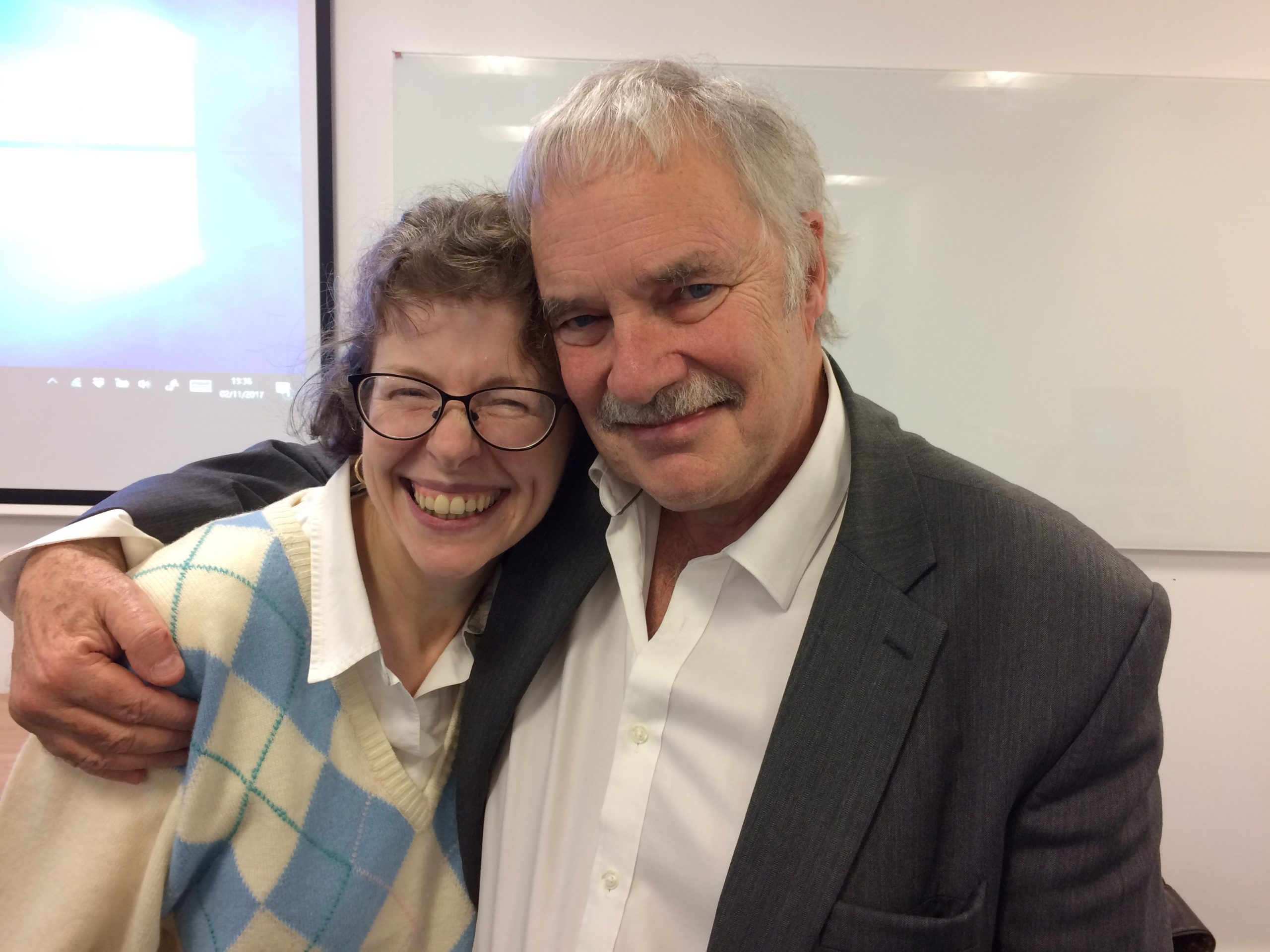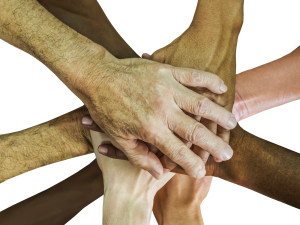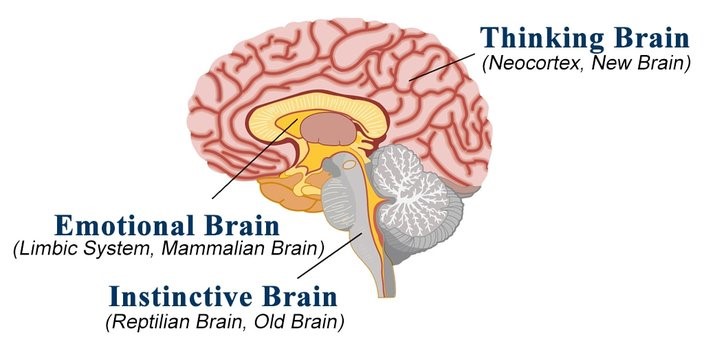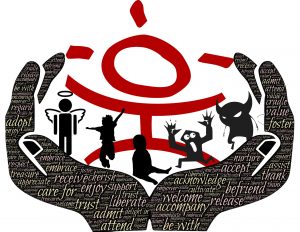Self-Compassion and Compassion Focused Therapy

By: Dr. Theresa Nicholas
Categories:
Self-Compassion and Compassion Focused Therapy
(My selfie with the lovely Paul Gilbert – published with his permission!)

Self-Compassion and Compassion Focused Therapy
I am writing about compassion and compassion focused therapy (CFT) this month, because I believe we are in a time where it is particularly important that we can feel permitted to be compassionate towards ourselves and to others. As we come out of lockdown I am reminded of the wise and reassuring words of Paul Gilbert, the creator of CFT, when I first heard him speak back in 2017:
“We all just find ourselves here with a brain, emotions and sense of a socially made self we did not choose, but have to figure out. Life involves dealing with tragedies; threats, losses, diseases, decay, death, and people do the best they can. Much of what goes on in our minds is not of ‘our design’ and not our fault. We are all in the same boat…”
As shops and cafes open and long queues become commonplace, social distancing measures may be more difficult to put into practice. Such situations can be really stressful for everyone, but some of us are likely to be more adversely affected. For people who already struggle with stress and social anxiety, such as those with neuro development conditions and/or mental health problems, entering a world with new rules due to the Covid-19 pandemic is daunting. Needless to say, many people have gone through traumatic experiences as a consequence of the past four months, bringing past fears and anxieties to the surface. As we wait in queues and try to maintain safe distances from strangers, many mixed and confusing emotions may bubble inside us making mistakes or misunderstandings a possibility. Consequently, we could find ourselves saying and doing things that are out of character leaving us feeling embarrassed and full of regret.

Though it is by no means easy, I encourage everyone to consider their own and the perspectives of those around them as we embark on this challenging journey together. By ‘looking at the world through someone else’s eyes’, we are taking the first steps to connect with our amazing and wonderful ability to empathise. When we are stressed or anxious using our empathic abilities is much harder, but is not impossible! Having empathy for ourselves can help develop our empathy for others, but it may seem like a ridiculous or strange thing to suggest. But pause for one minute …, what do you know and understand about the way you think and feel in this very moment? If you have difficulty answering this question, what would make it easier to understand yourself? Is there some hidden ‘benefit’ in not doing so? If you can describe how you think and feel, what does it say about the way you relate to yourself?

In my experience, this knowledge can be put to good use, not only because I become more aware of how I can misinterpret others and become very self-critical, but because it is the first step to developing a more compassionate relationship with myself. I use the term compassion here to include empathy, care, forgiveness, wisdom, acceptance and responsibility. Becoming more self-compassionate has also enabled many people around the world (including me) to become more compassionate towards others. Developing a compassionate mind is an ongoing process, a lifelong journey and a worthwhile one, which brings me back to Paul and CFT!
Compassion in a World with Covid-19
CFT (Gilbert, 2010) was originally developed to help people who suffer from shame. When we talk about shame we mean the negative feelings focused on our view of ourselves. The experiences we are all having whilst learning to live with the reality of Covid-19 may bring many different emotions such as anxiety, fear, embarrassment, sadness and anger, shame and guilt. Shame is a particularly painful emotion, compared to guilt, as it relates to feeling negatively about our individual characteristics or traits that are our ‘core self’, whereas ‘guilt’ tends to relate to our behaviour (though I am sure none of us would choose to feel either!). We all have a need to be thought of positively in the minds of others but we also need to feel good about ourselves. intense feelings of shame tend to be associated with the experience of rejection and exclusion in relationships that are important to us, such as with colleagues, friends, family and partners (Gilbert, 2009; Irons, 2019).

During lockdown we have all experienced worry and sadness due to separation from people (and animals) that are important to us, but an additional sense of exclusion may have also left many feeling ashamed. If we have previously experienced frequent rejection and/or bullying, social anxiety may add to this making it much harder to seek help and intensify that sense of isolation and feelings of shame (Welford, 2013). People find different ways to cope with this and protect themselves; we might become withdrawn, or angry, appear pompous or arrogant, but either way tends to cause those around us to back away exacerbating feelings of rejection and exclusion. To make things worse, even thinking about or imagining these awful experiences can bring those emotions back, adding to the vicious cycle.
The ‘Tricky’ Human Brain
The ability to imagine things and them feel so real is related to the more recent developments in the human brain that set us apart from most other animals. Due to these developments we have the modern human brain giving us self-awareness; we can think ahead and plan, fantasise and imagine things that never happened, but ruminate on them as if they actually did.

The older parts of our brain control our more primitive drives such as belonging to groups, status, and finding a mate. This older part also allows us to detect threat and control the fight, flight, freeze responses through basic emotions such as anger, anxiety, joy, sadness and lust. However, as modern mammals our brains are social because we also need affection and care. It is this social brain that gives us need for social affiliation, love and a desire to respond to others.

Linked to our ‘tricky brain’ in the CFT model we think about emotions as driven by 3 systems shown in the diagram below.
The 3 Emotion Systems

- We have a ‘motivation system’ driving us to consume and achieve creating feelings of excitement and energy within us.
- We have a ‘threat system’, which signals when our safety is at risk through feelings of anger, anxiety, fear and disgust, telling us to find safety.
- We also have a ‘soothing system’ generating feelings of comfort, love and calm when we are connected with others we trust and are engaged in calming and pleasurable activities.

We require all three of these systems to be in balance to cope with life. When they get out of balance, for example, if we are drawn into the world of endless work, consumerism and risk taking as attempts to seek contentment, we begin to struggle.

The experience of trauma can cause the threat system to become hyper-aroused making it hard for people to seek help due to a fear of being hurt again and creating a barrier to self soothing (Lee & James, 2012). Living through a pandemic has been traumatising for many people and is likely to be sending the old brain into overdrive making it harder to think clearly, as we anticipate threat around, and possibly within, us from the Coronavirus. When it comes to our ability to cope, it makes sense that our motivation and threat systems will be trying to take the lead. The risk is that we can find ourselves feeling hypersensitive to any form of threat, including judgment, criticism, irritability or anger from others. Our poor old soothing system may then take a backseat during lockdown, due to isolation and disconnection with our family, friends and colleagues, unless we make a concerted effort to keep it activated. “But how do I do this?” I hear you ask. Well I have given you a few clues up to this point…!
Self-Compassion and the Soothing System

Maintaining connection with people who are loving and considerate towards us activates our soothing system. It is also activated through activities that are pleasurable and calming to you personally, such as pottering around your garden, sipping a cup of your favourite tea or been wrapped up in duvet. Nonetheless we can activate our soothing system using SELF-COMPASSION! Some of the activities that can be done to enhance self-compassion are very simple and can be carried out anywhere. For example, ‘soothing breathing’ is an intrinsic part of self-soothing because it de-activates the stress response and used as a fundamental part of the compassionate mind training and compassion focused therapy. Learning to pay attention to how we think and feel is also an essential part of developing a compassionate mind. Being able to notice and turn your attention toward your thoughts and emotions without analysing, judging and racing off ‘down the rabbit hole’ into misery takes some dedication and practice but is well worth putting time and practice into.

This ability is often referred to as Mindfulness and is a skill you will find yourself using constantly once acquired. Using Mindfulness helps us to tune into our compassionate side. It can be helpful to have an image of compassionate place that you can bring to mind when struggling with self-critical thoughts or feeling distressed. Other soothing activities involve writing a compassionate letter to yourself or imagining being connected with a ‘compassionate other’ (this could be a real or imaginary person or animal). There are also many compassionate meditations along with instructions to do these activities widely available on the Internet from The Compassionate Mind website and others (listed at the end of this blog post).

For some people the idea of self-compassion feels uncomfortable and it is not to everybody’s taste (a little bit like marmite). Also, many people think that the practice of self-compassion will make us selfish or arrogant, but it actually has the opposite effect and helps to cultivate a calm acceptance of others. I have noticed from personal experience that through the practice of self-compassion I feel less threatened by and suspicious of others’ motives, therefore I am less anxious and irritable. As a result, other people seem to find me easier to be around and are more inclined to be compassionate towards me. If I make a mistake (and being human, I often make them!) I accept responsibility, try to understand what lead me in that direction and do what I can to avoid this in the future. By doing so, I am developing some wisdom (I hope) for the next time I’m up against an awkward or difficult situation.
In the modern world self-criticism and rumination are actively encouraged through our post-modern consumerist culture that tells us self improvement should be a constant endeavour in order to reach an indefinable state of perfection, which is not possible, creating more self-criticism and anxiety. I use the acronym shown below to help me remember how to maintain a compassionate mind:
BE WARM:

- B – Bravery
- E – Empathy
- W – Wisdom
- A – Acceptance
- R – Responsibility
- M – Motivation
We all do things we are ashamed of. Through owning our mistakes we accept and take responsibility for them. By doing this we can learn, forgive ourselves and live with growing wisdom, allowing us to cultivate a sense of warmth and affiliation with others.
I offer the mantra below, from mindful self compassion as a message of hope and good will to you all:
May you be safe and free from harm
May you be peaceful and happy
May you be healthy and strong
May you live with ease

Please note that this blog post is not intended as a replacement for professional help or therapy and I encourage anyone reading this who feels unable to cope alone to seek professional help. The Resources page on this website has information on helplines and organisations that offer support and further guidance.
References
Gilbert, P. (2009). The Compassionate Mind: Compassion Focused Therapy. London, Constable.
Irons, C. (2019). The Compassionate Mind Approach to Difficult Emotions: Using Compassion Focused Therapy. Robinson.
Lee, D., & James, S. (2012). The compassionate mind approach to recovering from trauma: Using compassion focused therapy. Hachette UK.
Welford, M. (2013). The power of self-compassion: using compassion-focused therapy to end self-criticism and build self-confidence. New Harbinger Publications.Recommended
Websites
The Compassionate Mind Foundation website has many useful resources free to use: https://www.compassionatemind.co.uk/
The website for the International organisation for Compassion can be found at: www.the-iacp.com
Daniel Siegel is an expert on neurobiology, mindfulness, compassion and clinical issues and has a fabulous website full of interesting resources: www.mindsightinstitute.com
Randy Nesse has written a great deal on the evolutionary approach toaltruism and commitment which is very interesting and some of his papers are available on his website: http://www.randolphnesse.com/
The Research Alliance on Positive Psychology by Martin Seligman: www.positivepsychology.org
The Happiness Formula is a series of programmes developed by the BBC, which can be found at: http://news.bbc.co.uk/1/hi/programmes/happiness_formula/
